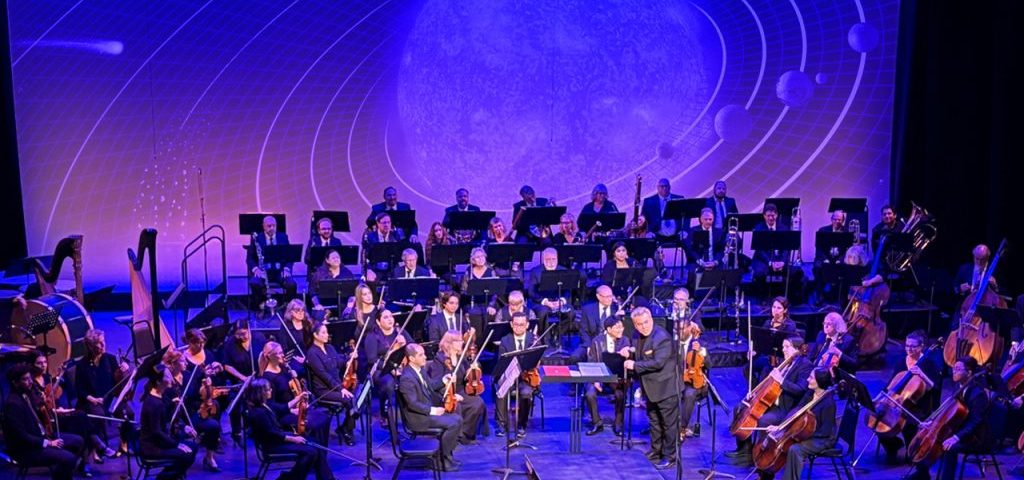From Orchestra to Outer Space: How Gustav Holst’s The Planets Shaped Modern Filmmaking
When Gustav Holst composed The Planets between 1914 and 1917, he likely had no idea that his seven-movement orchestral suite would one day influence some of the greatest film composers and cinematic storytellers of the 20th and 21st centuries. Though the suite was inspired by astrology rather than astronomy, its epic scope, emotional range, and dramatic orchestration would go on to define how we experience outer space, fantasy realms, and even mythological battlefields on screen.
Let’s explore how The Planets became one of the most potent musical blueprints for film—and why its influence still resonates in movie theaters today.
A Soundtrack Before Soundtracks
Holst’s The Planets wasn’t written for film, but it might as well have been.
Each movement represents a different planet and its associated astrological character, from the aggressive and relentless “Mars, the Bringer of War” to the serene and ethereal “Venus, the Bringer of Peace.” These contrasting themes and moods echo what we now expect from film scores: music that evokes tension, emotion, wonder, and momentum.
Before Hollywood had John Williams or Hans Zimmer, Holst had already crafted a symphonic journey through the cosmos that could easily double as the backdrop to a cinematic epic.
“Mars” and the Rise of Science Fiction Cinema
Perhaps the most iconic movement, Mars, the Bringer of War, with its 5/4 rhythmic drive and pounding percussion, has become the unofficial sound of space battles. It’s hard to listen to it without imagining starships charging across a galactic battlefield.
Filmmaking parallels:
John Williams drew direct inspiration from Gustav Holst when composing the score for Star Wars, particularly from the intense, driving force of Mars, the Bringer of War. He echoed that same ominous power in themes like “The Imperial March,” using bold orchestration and relentless rhythm to evoke menace and authority. Hans Zimmer tapped into a similar energy in his score for Gladiator, layering tribal drums and militaristic rhythms to amplify the film’s emotional and epic scale.
Across the film industry, composers and editors continue to turn to Mars for its sheer dramatic impact, frequently featuring it in sci-fi trailers and temporary scores to convey urgency, tension, and grandeur.
Mysticism and Mystery: “Neptune” and the Unknown
Neptune, the Mystic, the suite’s final movement, features a wordless, offstage female chorus that fades into silence—something revolutionary at the time. Its otherworldly, drifting texture was a precursor to ambient music and a staple mood in science fiction soundtracks.
Film composers have drawn clear inspiration from the choral textures in Neptune, weaving similar ethereal sounds into scores for movies like Interstellar, Contact, and Arrival. These films echo Holst’s mysterious atmosphere, using ambient voices and subtle harmonies to evoke vastness and the unknown. Instead of ending with a strong, definitive chord, many modern scores now let the music fade into silence—mirroring Neptune’s haunting close—to leave audiences with a sense of uncertainty, wonder, or introspection. This approach has become a powerful cinematic technique that Holst helped pioneer.
The Structure of Epic Storytelling
Holst’s suite was more than just a collection of movements—it had a narrative arc and emotional pacing. This structure is a key reason The Planets became a favorite among film editors and composers. It provided a ready-made emotional roadmap:
- “Mars” = conflict or rising danger
- “Venus” = resolution, romance, or emotional warmth
- “Mercury” = agility, movement, transition
- “Jupiter” = triumph, joy, or climax
- “Saturn” = aging, inevitability, or introspection
- “Uranus” = eccentricity, magic, unpredictability
- “Neptune” = transcendence, mystery, or finality
This spectrum of mood and motion taught generations of composers how to score emotion without dialogue.
The Planets in Pop Culture and Film Education
Filmmakers have directly used The Planets in films and trailers—often as temporary scores—even when Holst wasn’t formally credited. Its sweeping orchestration and emotional range made it a go-to choice for capturing cinematic intensity before original soundtracks were finalized.
Film scoring programs around the world treat The Planets as essential study material, offering composers a rite of passage into the world of orchestration and thematic development. Early sci-fi and fantasy trailers often drew on Holst’s music to fuel their cosmic visions, relying on his compositions to evoke drama, wonder, and scale long before studios commissioned custom scores.
A Legacy Beyond the Stars
Although The Planets predates the golden age of film by decades, it continues to be a powerful influence on movie music. Its bold experimentation, rich orchestration, and emotionally driven structure made it a natural foundation for cinematic sound.
In many ways, Holst gave us the original soundtrack for exploring the unknown, whether that means flying to Mars or diving into the mysteries of the human experience.
If you’ve ever watched a film and felt your heart race during a space battle, or paused in awe at the sound of a distant celestial choir, you may have Holst to thank. The Planets didn’t just change classical music—it helped shape the way we dream on screen.

